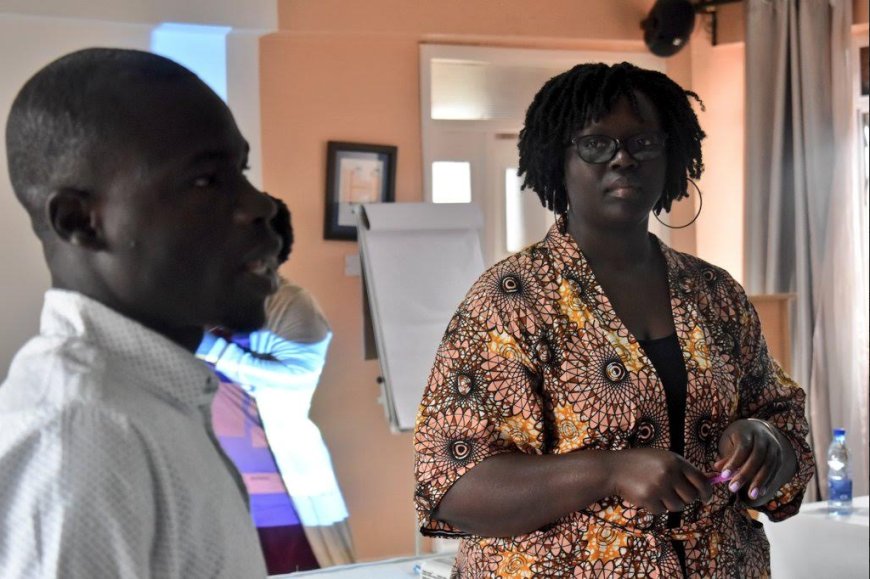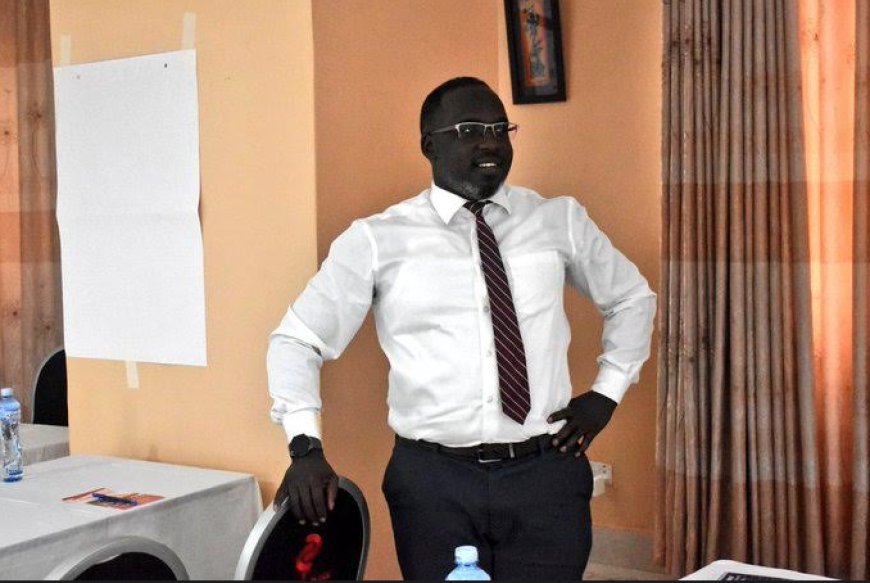Use a gender sensitive approach: Media PR actioners advised
Agwang also implored journalists on gender mainstreaming; a conscious approach of an organization to consider gender equality concerns in all policy, programs, administrative, and financial activities as well as organizational structures and procedures.
KAMPALA - Uganda Women’s Network (UWONET)convened media professionals and practitioners representing various media houses for a capacity enhancement training on gender neutral communication and reporting on 16th and 17th March 2023 at Eureka place Hotel, Kampala. The training aims at enhancing participants’ knowledge on messaging frameworks and effective communication for greater acceptance of a progressive women’s rights agenda. UWONET Program Coordinator, Ms. Julian Naluwooza, encouraged media professionals and practitioners to consider using a gender sensitive approach in their reporting and reiterated the need for institutions to have gender policies in place.
Ms. Sarah Jesca Agwang, Director of Programmes (DOP), UWONET in her welcome remarks and setting the agenda for the training revealed that as a women’s movement, they need to work harder to intensify scarcity of news frames in media reporting on the issues of gender. She says framing is very important in shaping the narrative and perception of the messages.
Agwang also implored journalists on gender mainstreaming; a conscious approach of an organization to consider gender equality concerns in all policy, programs, administrative, and financial activities as well as organizational structures and procedures.
She also linked gender and development, a realization by the global community and development actors that mean right and impactful. Jesca Agwang talked of other topics such as;
a) Gender analysis: Studying information to ensure that benefits of policies and programs are equally distributed to men and women; gender roles (learned behaviors in a given society that prescribe what men and women do
b) Community gender roles, community management, gender sensitivity (being conscious of different situations and needs of women and men throughout the decision-making process), which entails the ability to recognize the differences in perception and interests between males and females arising from their different social position and gender related roles; gender responsive budgeting; gender disaggregate data( a numerical representation of information with a clear reflection of how many men, women, PWDs etc. were targeted or impacted) which is important for government in terms of planning.
c) Gender needs: That which is essential for men and women to undertake their ascribed roles.
d) strategic gender interests.
e) Gender socialization: Gender is learned, nurtured, and sustained through processes that are collectively referred to as socialization. Socialization takes place in the home, workplace, religion, community functions, and cultural functions.
Judith Atim, another facilitator trained the media practitioners on gaining an understanding of the relationship between media and gender. She says gender sensitive or gender responsive reporting is the practice of producing media content in a way which is sensitive to gender inequalities and portrays women and men fairly. It gives voice and space to issues affecting women and men and is vital in detecting and recognizing differences and inequalities between men and women.
According to Judith Atim, some of the priciples to be followed include;
a) Balance in media coverage should reflect reality of society, different human experiences, and views.
b) While balancing male and female sources, treat them both equally. She advised that where female experts are in short supply, reach out and get views on gender-focused organizations agencies though in urban centers it is not so common.
c) Avoiding gender stereotypes. To avoid gender stereotypes, be knowledgeable on the legal and policy frameworks that govern issues in Uganda and the status of their implementation. Do not reinforce stereotypes no matter how subtle.
d) Use appropriate language when reporting on issues of gender. Be mindful of the language you use when reporting on issues of gender. Gender-neutral language ensures that there is inclusivity of both man and women.
e) Appropriate ways of representing women in the media include the use of a range of images that reflect the diversity of both gender because men and women represent all forms of diversity such as race, ethnicity, skin shades/tones and physical attributes/appearances.
f) How to tell the gender story: give gender issues the same urgency as politics, crime, security/defense, business etc. Regularly provide awareness on gender issues in the newsroom and remind reporters on the importance of gender.
In her concluding remarks, Judith Atim reminded the media practitioners to be aware of the environment they operate in and also its social context in which we work in order to communicate neutrally on issues of gender.
Meanwhile, Sean Solomon Oseku another facilitator said that as a country the media industry in Uganda needs to shape the narrative on gender reporting because of numerous difficulties such as structural failings, ineffective law enforcement to hidden social and cultural barriers, the most endured being women’s policies concerns. He says in the media today, there is poor representation of gender in the generation, production, and transmission of content. Since 1993, UWONET has done advocacy aimed at transformation and unequal gender relations.
Sean Oseku added that there is need to gain strategic understanding of how the media specifically print and electronic are reporting by giving special attention policy issues that include; marriage, bride price, age of marriage, marital rape, sexual violence, land rights, property rights, inheritance and divorce. “There is a strong influence that the media is capable of exerting on its audiences which influences in achieving the much-needed agenda equally through neutral reporting,” he revealed. The following are some steps he recommended;
The generation of gender-sensitive and transformative content.
Breaking gender stereotypes helps put out information in the most accurate way by challenging negative social and cultural norms and attitudes regarding gender.
Portraying women not as an exception, but in their own right as experts on diverse issues, on a day to day basis.
On the role of media coverage on gender issues in Uganda, Sean Oseku said that only a few media PR actioners have a good comprehension and appreciation of the gender communications discourse and its implications in the national development agenda. This has had a direct bearing on the representation on gender specifically the female gender. He says that a woman being a seed for continuity of human existence because she nurtures and brings life, it is always good to refer to the historical formation of that continuity, a projection of its future. Central to this is the human called woman, hence while reporting, journalists were advised to use text, illustration using languages which must be an expression of keen and responsible observations.



































































































